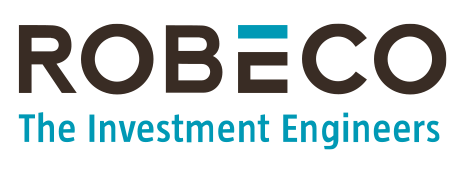Allocating capital is the core business of investing. However, when investing through secondary markets, which is the largest part of what we do as asset managers, the link with actual new capital allocation is limited. Why then are we often held accountable for any investments that make a negative impact, but are scrutinized for taking credit for those investments that make a positive impact?
Speed read
- Proving that buying and selling stocks or bonds creates change is hard
- Decarbonization supported by engagement does make a difference
- Creating impact in secondary markets means investing in innovative companies
In the secondary market, there is always a buyer for everything we sell, and vice versa. We can influence prices, but selling or buying stocks or bonds does not lead to change in the real world directly. There are several mechanisms through which investors can influence real world change.
Allocating capital to companies based on ESG performance or impact can increase a firm’s cost of capital (which becomes important when money needs to be raised), or it can signal to stakeholders that the company should change its behavior. Unfortunately there is not a lot of empirical evidence yet that this is particularly effective.1
And then of course companies with higher costs of capital require higher returns, which could be interesting for financial-only investors. Another interesting perspective on this is given in our five-year Expected Returns, where we examine the potential climate impact on asset prices.2
Companies tend to be valued on cash flow models. Besides the long-term argument of a high cost of capital leading to higher returns for ‘brown’ companies, you can also use the shorter-term argument of an adaptation period. This takes into account climate change impact and how the cashflows of companies will be affected by climate change risk in the medium term. We assume that in the coming five years a positive climate premium will be priced in, leading to lower returns for ‘brown’ companies during this ‘adaptation period’.
Firing on all cylinders
As investors, the challenge for us is to reduce our real world negative impact and increase our real world positive impact. However, there is no clear evidence yet we can do this through capital allocation, though we have found other ways of exerting influence. An example of this is our net zero roadmap, which aims to help achieve a carbon neutral world by 2050. An important part of this is decarbonizing our assets.
But as discussed above, by selling our most carbon-intensive assets, the world does not suddenly emit less carbon. Therefore, we add other elements to our roadmap such as decarbonizing our own operations, which does have a direct impact and shows that we walk the talk.
We also try to accelerate the transition by engaging with companies and countries. Lastly, we cooperate with many investors, academics and industry initiatives to set standards and promote climate-aligned investing. We have also promised to work with our clients on decarbonization to cover 100% of our assets under management by 2050.
So, decarbonization is a big part of our net zero roadmap, and we are firing on more cylinders…
Creating impact through investing in secondary markets
Having said all that, as a golden oldie in the sustainable investing space, I simply refuse to believe that we do not have an impact through buying and selling stocks in the secondary market. We are seeing sustainability becoming more important and certain areas of business are becoming less and less acceptable to invest in, such as tobacco, controversial weapons and coal.
At the same time, some businesses have become more attractive to investors in areas such as energy efficiency products and electrical vehicles. This sends a clear signal to companies active in this space. Even if it is not a premium to harvest, at the least, we will be experiencing a transition period.
But there is also a second way to make an impact – namely by researching to what extent companies produce products and services that make a clear contribution to some of the sustainable development challenges. We can also research to what extent they develop new business models and expand their businesses into otherwise under-served markets, countries or regions.
How innovative companies make a difference
Some examples are innovative companies that are reducing their footprints via recycling, and pharmaceutical companies that work on pricing models based on the efficacy of the product. This is enabling them to develop cheaper access to health care via digitalization, or give access to medicine in under-served markets.
These companies create an impact versus the status quo. Investing in them will provide them with a shareholder who supports their mission and long-term orientation, which helps the company achieve both the financial and impact goals.
So, by taking both ESG and financials into account, and by adding active ownership with corporates, governments and our clients to the mix, we actually do increase our impact.
1 Is Exclusion Effective?, David Blitz and Laurens Swinkels, The Journal of Portfolio Management Ethical Investing 2020. And Cost of Capital and Sustainability: A Literature Review, Gianfranco Gianfrate, Dirk Schoenmaker, Saara Wasama, Erasmus Platform for Sustainable Value Creation,
2 https://www.robeco.com/en/insights/2021/09/5-year-expected-returns-the-roasting-twenties.html


